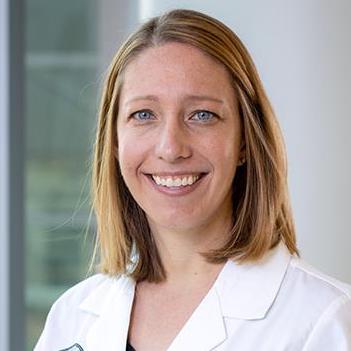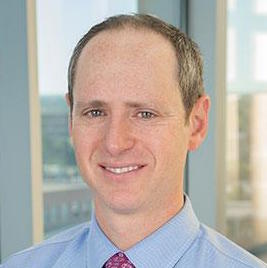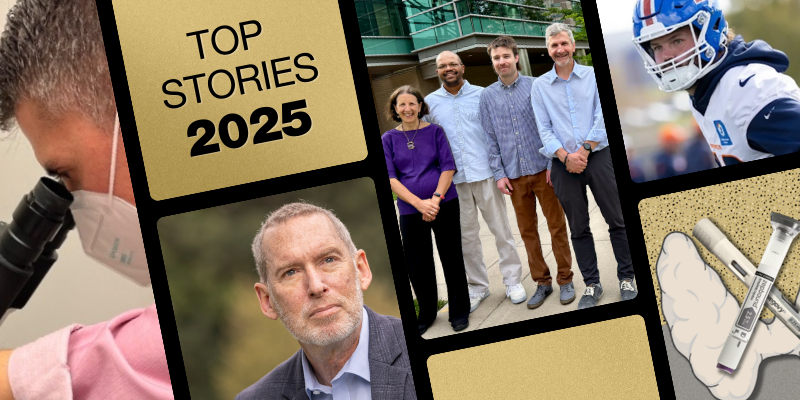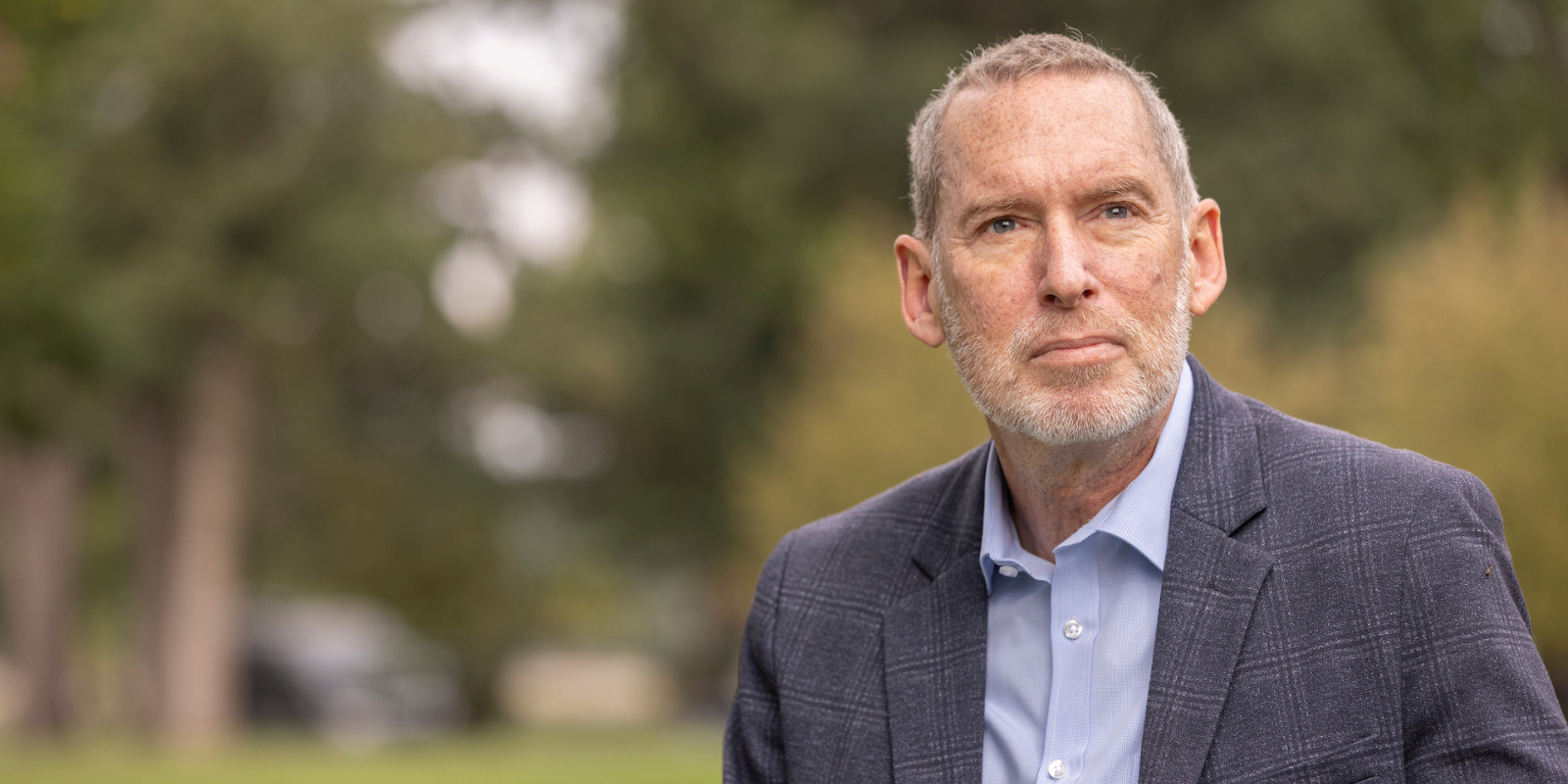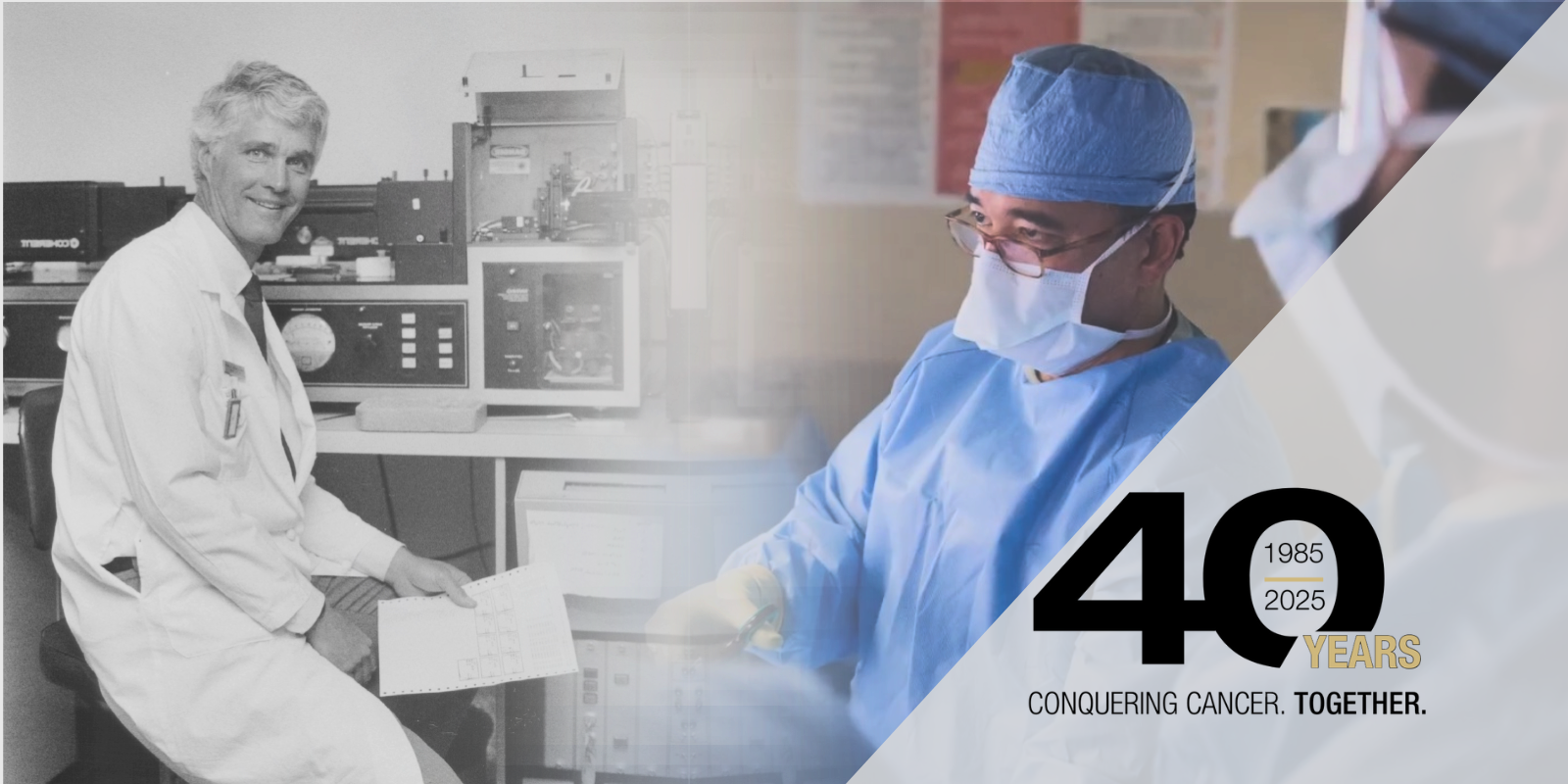Matt Lubick had finished marathons before, but none was so personally meaningful as the 26-mile distance he covered in one day while being treated for leukemia at UCHealth University of Colorado Hospital. Lubick walked dozens of laps around the facility, wheeling his IV pole up and down the corridors as day slowly turned to night outside the tall glass windows.
“It was my first day of chemotherapy, and it felt really good to walk,” Lubick says. “My doctors gave me a lot of hope and confidence going into this, which I didn’t necessarily have before. They made me feel like, ‘You're not a statistic, you're a person. You're in really good shape, and things are going to be OK.’ When someone believes in you, it gives you hope. It gives you energy.”
What started as a way to stretch his legs during treatment became a personal challenge for Lubick when a hospital staffer mentioned that another patient had walked the length of a marathon throughout the hospital years ago. Lubick set out to see if he could do the same.
It was a reflection of the kind of person Lubick is, says University of Colorado Cancer Center member Dan Pollyea, MD, MS, who was part of Lubick’s treatment team.
“There are unhealthy coping mechanisms, and there are healthy coping mechanisms, and it’s a pretty healthy coping mechanism to say, ‘I'm in this horrible situation, but not only am I going to stay positive, I'm going to challenge myself,’” says Pollyea, professor of hematology in the CU School of Medicine. “Matt said, ‘I'm going to do something that I love to do, I'm not going to let the limitations of being in the hospital impact me, I'm going to do what I always do, which is get up and move. I'm going to set a goal and meet it.’ I'm sure that helped him adapt to his situation.”
Diagnosing a mystery illness
For Lubick, who just took a new job as offensive coordinator for the University of Nevada football program (he’s the son of former Colorado State University football coach Sonny Lubick), that situation began in August 2023, while he was training for another marathon. Lingering fatigue and a series of low-grade fevers prompted Lubick to see his doctor, who at first suspected a viral infection because of low blood cell counts. Lubick, who then lived in Fort Collins, spent a few days in the hospital, but even after he was discharged, his white blood cell counts remained dangerously low.
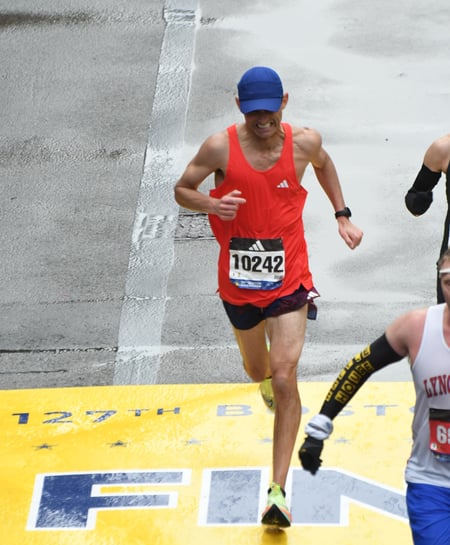 Lubick at the finish line of the 2023 Boston Marathon.
Lubick at the finish line of the 2023 Boston Marathon.
His doctors eventually ordered a bone marrow biopsy, which led to a diagnosis of acute myeloid leukemia (AML), a blood cancer that starts in the bone marrow. He was referred to the CU Cancer Center for treatment — specifically to Pollyea, who is overseeing an active clinical trial of a medication called venetoclax, along with a low dose of the chemotherapy drug azacitidine, for patients with AML.
“We have found that this regimen is able to target the leukemia stem cell population — the root cause of the disease,” Pollyea says. “If you think of leukemia like a weed, there's the flower part, like a dandelion, that chemotherapy can come in and mow over. Maybe you don't see it anymore, but the roots are still there. Venetoclax with low-dose chemotherapy has the potential to get at the roots of the disease, and if you can pull up the roots of the disease, you can get a long-term remission or even a cure.”
Remission accomplished
Lubick went into remission just two weeks after starting the treatment and was able to go home after the chemotherapy portion, while still taking the venetoclax, which is a pill patients take orally. He says he feels fortunate to have been treated by his CU Cancer Center team that included Pollyea and Christine McMahon, MD, assistant professor of hematology.
“It was a real blessing that I was able to be part of that trial and to have the leadership of Dr. McMahon and Dr. Pollyea to advise me to be on it,” he says. “I had no experience to judge it on, but it couldn't have been more effective. I can't emphasize enough how well I felt while I was on it.”
McMahon says that for a young, fit patient like Lubick, the venetoclax-azacitidine combination allows for much more activity during treatment.
“If he had gotten the traditional intensive chemotherapy, he would have had to stay in the hospital for a month,” she says. “With this clinical trial regimen, he was able to go home after the first week of treatment, and he stayed extremely active throughout his treatment.”
On to transplant
The final step in Lubick’s treatment was a stem cell transplant, which was performed in December 2023 at UCHealth University of Colorado Hospital. The haploidentical or “haplo” transplant, which used a combination of cord blood and donated blood from Lubick’s sister, was overseen by CU Cancer Center member Jonathan Gutman, MD, professor of hematology.
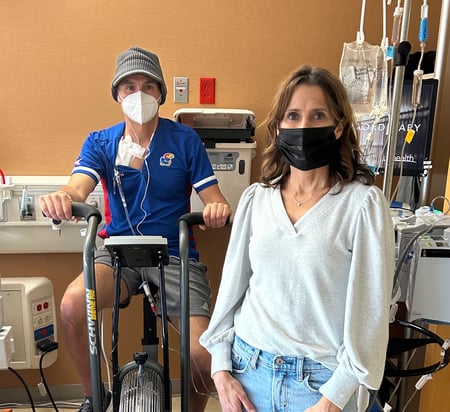 Lubick in his hospital room with his sister, who served as a donor for his stem cell transplant.
Lubick in his hospital room with his sister, who served as a donor for his stem cell transplant.
Though the medication combination put him into remission, McMahon says, a stem cell transplant replaces the recipient’s blood and bone marrow with donor cells. This not only ensured that the leukemia cells were gone from his system, but it also essentially provided him with a new immune system that can prevent the leukemia from coming back.
“The venetoclax-azacitidine regimen was initially studied in the elderly population, and many of those patients are not candidates for stem cell transplant,” McMahon says. “There is an option to continue venetoclax indefinitely for patients who continue to respond to treatment, and it's possible that it might be able to cure a small proportion of patients with AML. There are reports of long-term survivors who have been able to stop this treatment without a stem cell transplant and haven’t relapsed. But that's not the majority of people. For a younger, fit patient like Matt, a transplant is the best chance for long-term cure of his leukemia.”
All told, Lubick was in the hospital for 32 days while receiving the stem cell transplant, and he had to remain within a 30-mile radius of the hospital for two months after that. Aside from an intense fever that is a common side effect of the transplant, he came through the procedure just fine, McMahon says.
“He'll still need regular monitoring, with bloodwork and some occasional bone marrow biopsies, but the frequency of his visits really decreases now that he’s doing well.”
Look on the bright side
Lubick knows that not every patient with AML comes through treatment with the same positive results he has. And while his cancer journey has had its share of struggles, it has had its bright spots as well, he says.
“There are some things I’m thankful for because of this,” he says. “My faith has been strengthened, and I needed that to happen. My priorities have shifted — things I used to think were important, or that stressed me out, don't stress me out and aren't that important. I have a lot more appreciation for life. My relationships with friends and family have become stronger through this.
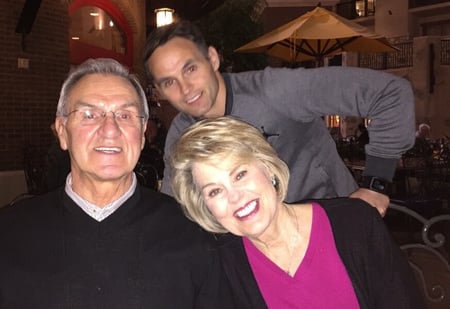 Lubick with his parents.
Lubick with his parents.
“I’ve had a unique opportunity to talk to so many people because of my experience — people have reached out to help me that I didn't know,” he adds. “It's been very humbling. I'm hoping down the line that I can help other people in the same way people are helping me right now. There’s a physical part to healing, which is a big deal, but there’s a mental and spiritual part of it too. Adversity is inevitable, but being miserable is optional.”

